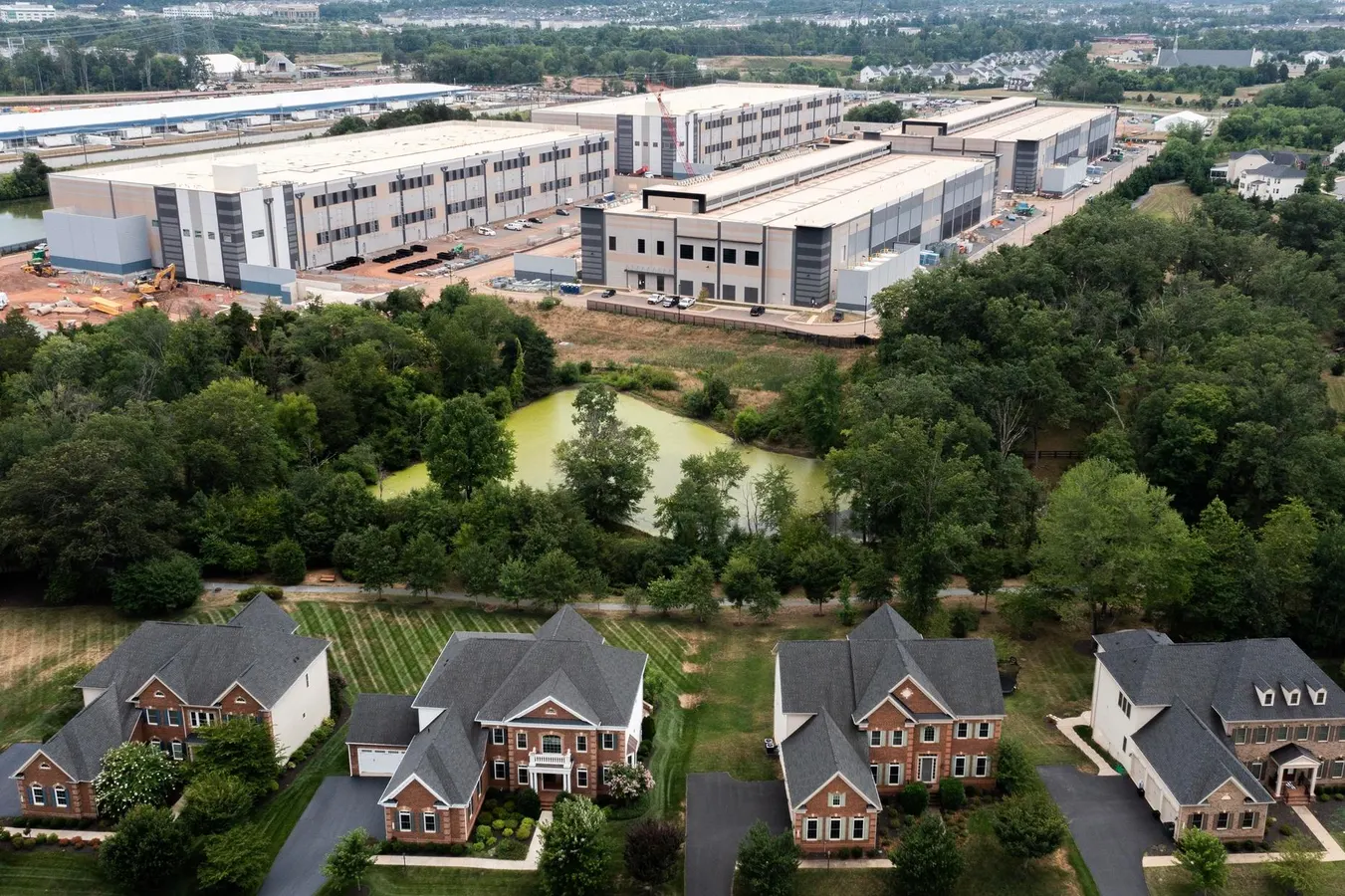By Contributor,Llewellyn King,Nathan Howard
Copyright forbes

STONE RIDGE, VIRGINIA – JULY 17: In an aerial view, an Amazon Web Services data center is shown situated near single-family homes on July 17, 2024 in Stone Ridge, Virginia. Northern Virginia is the largest data center market in the world, according to a report this year cited in published accounts, but is facing headwinds from availability of land and electric power. (Photo by Nathan Howard/Getty Images)
Getty Images
The data center-utility romance may be in for a period of adjustment, if history repeats itself.
The writing about artificial intelligence talks increasingly about the AI bubble and speculates on how and when it will burst.
If this happens, there will be consequences for the whole economy and specific consequences for electric utilities, which have responded to growth in data centers with big investments in new generation and upgraded infrastructure.
Those discussing a bubble burst, including The New York Times, The Wall Street Journal and The Economist, point to the enormous sums of money now chasing the dream of AI.
About $4 Trillion Set To Be Spent
About $1.5 trillion will be invested worldwide on AI this year, and this will rise to $4 trillion over the next several years, according to widely published calculations.
The Wall Street Journal points out that while the big tech companies have invested mightily in AI infrastructure, they have been joined by many lesser companies, which are mostly debt-financed, and this increases the chances of a shakeout.
It is also akin to the dot-com bubble of the 1990s, when debt-financed dreams overwhelmed financial reality.
The underlying problem for AI companies is that revenues are almost nonexistent while expenditures are gargantuan. Aside from those companies with hardware in the game, like Nvidia, the others are still struggling with business plans.
MORE FOR YOU
Few in the AI field have a clear picture of how they will make money. Their business plans are sketchy, but the market has indulged them anyway.
Whereas players like Alphabet and Meta have been built on advertising, that doesn’t appear to be an option with AI. In fact, Alphabet is seeing its Google search business impacted by advertising-free AI searches. More and more people are using the AI option provided on the Google search bar.
The dot-com bubble of the 1990s burst spectacularly in 2000, cutting three quarters of the value of the Nasdaq and wiping out many small investors. It was another case of bad business plans and high expectations.
All of big tech’s leading players are pushing market capitalizations that are history-making: Early in July, Nvidia’s market cap was $3.85 trillion; Microsoft’s, $3.70 trillion; Apple’s, $3.06 trillion; Amazon’s, $2.33 trillion; Alphabet’s, $2.15 trillion, Meta’s, $1.86 trillion; and Tesla’s, $1.02 trillion.
The electric utilities have been the beneficiaries and the victims of this investment explosion. A beneficiary because a whole new and exciting market has opened up, and a victim because the surge in demand for power from the data centers has pushed up electricity prices — by 20 percent since 2020, according to the Energy Information Administration.
Electric utilities face the prospect of stranded assets if there is an AI bubble burst while they build to meet the projected AI demand.
Chips Getting Faster And Cooler
Another threat comes from the evolution in the chips that run AI. The vast demand for power applies to all phases of the process, with cooling taking 40 to 60 percent of this, an engineer who designs data centers told me. That percentage is coming down with evolved chips and sophisticated cooling (using more water and less air conditioning) and introducing cooling in the chips themselves.
The incorporation of photons (light) is already underway as the industry struggles to perfect photon chips. These would be much more efficient, use far less power and generate almost no heat.
With photon chips, data centers would be much more efficient and fewer might be needed, and those would use much less electricity.
A big reduction — temporarily if the AI bubble bursts, and permanently if new chip architecture takes over — in electricity demand is possible. But it won’t affect the overall growing demand for electricity. That will continue as the economy electrifies.
Electric utilities are also challenged by the move to self-generation by tech companies and their insistence on green power.
The rate of growth of data centers is beginning to be affected by supply chain issues. Many of the components still come from overseas and the data centers are running into the same supply chain constraints that have been plaguing the electric utilities.
Additionally, according to a data center designer, skilled labor is in very short supply, from people who pull wire to those who pour concrete.
The collaboration between electric utilities and data centers is stable, though it may still encounter some nasty shocks. Datapoint: PG&E has just announced that it will spend $73 billion on upgrading its power supply to meet surging demand, mostly from data centers.
Editorial StandardsReprints & Permissions



